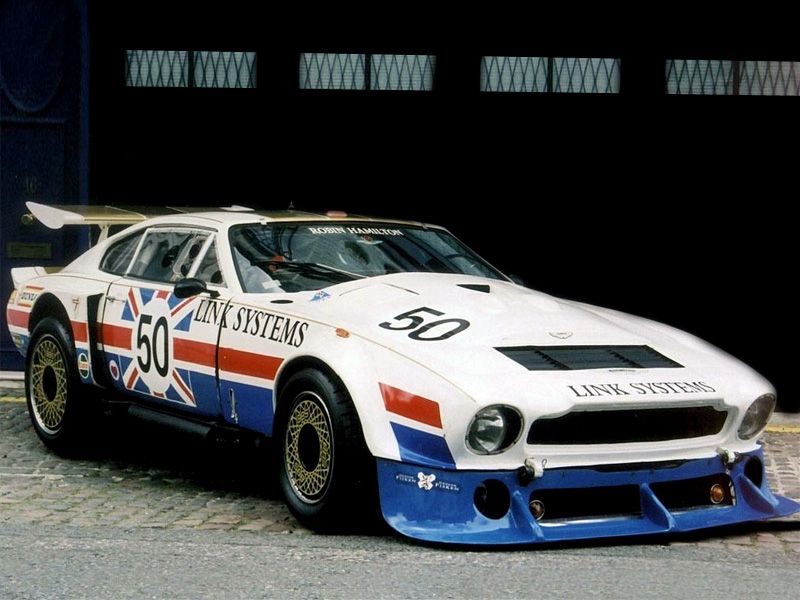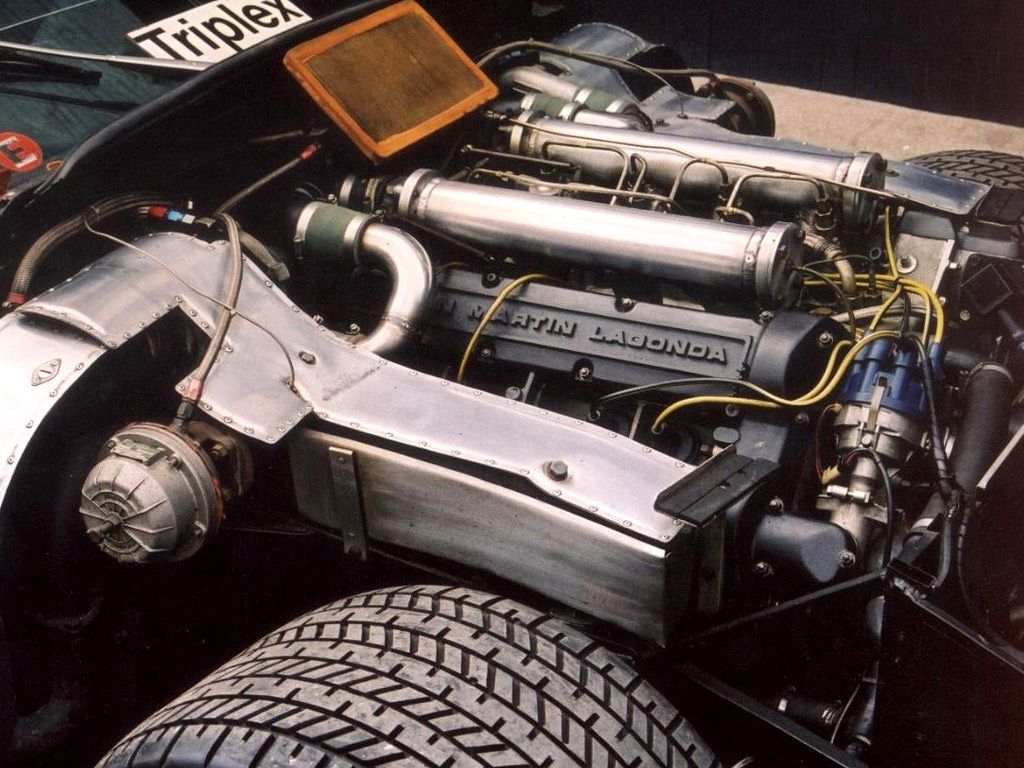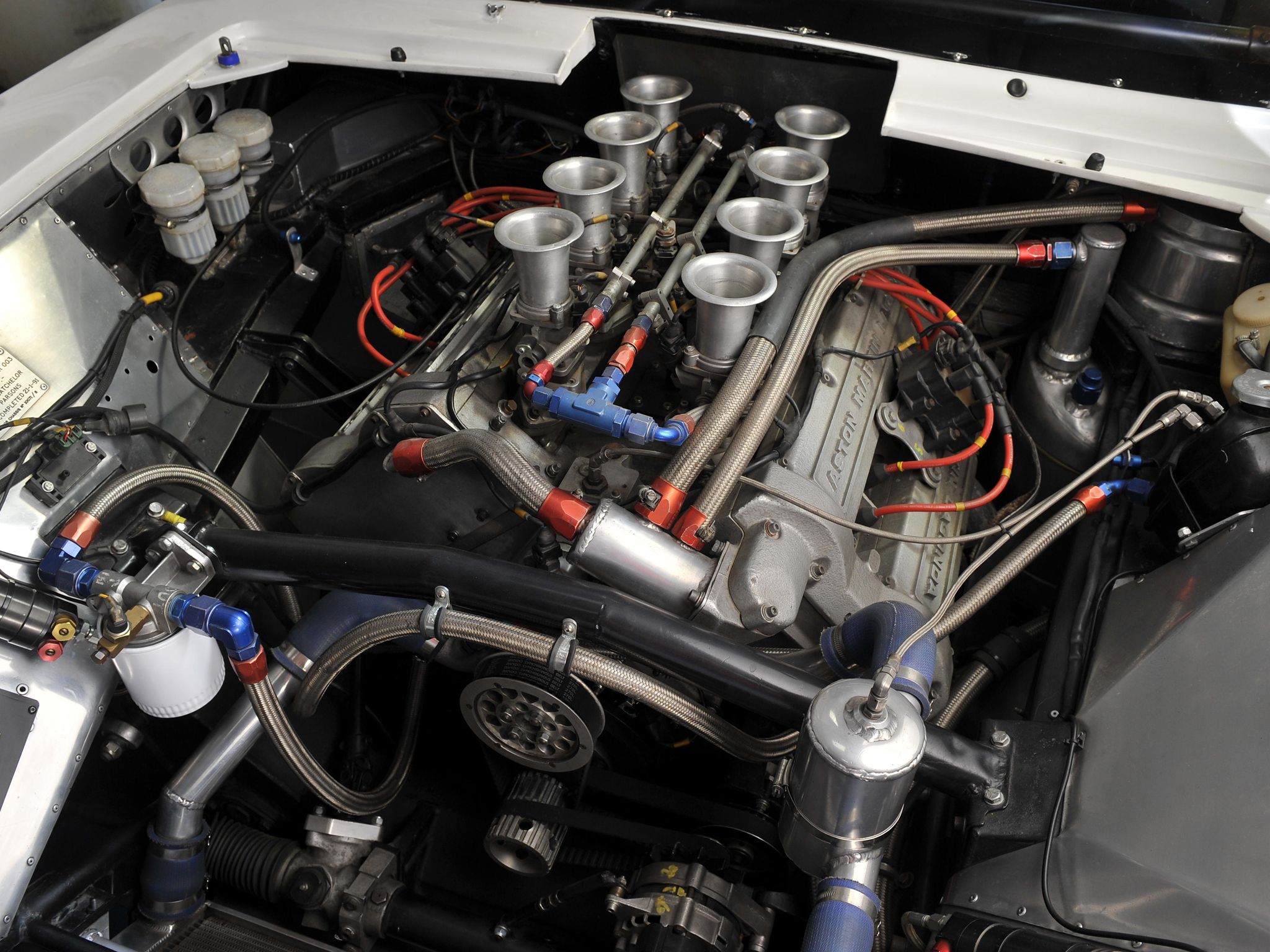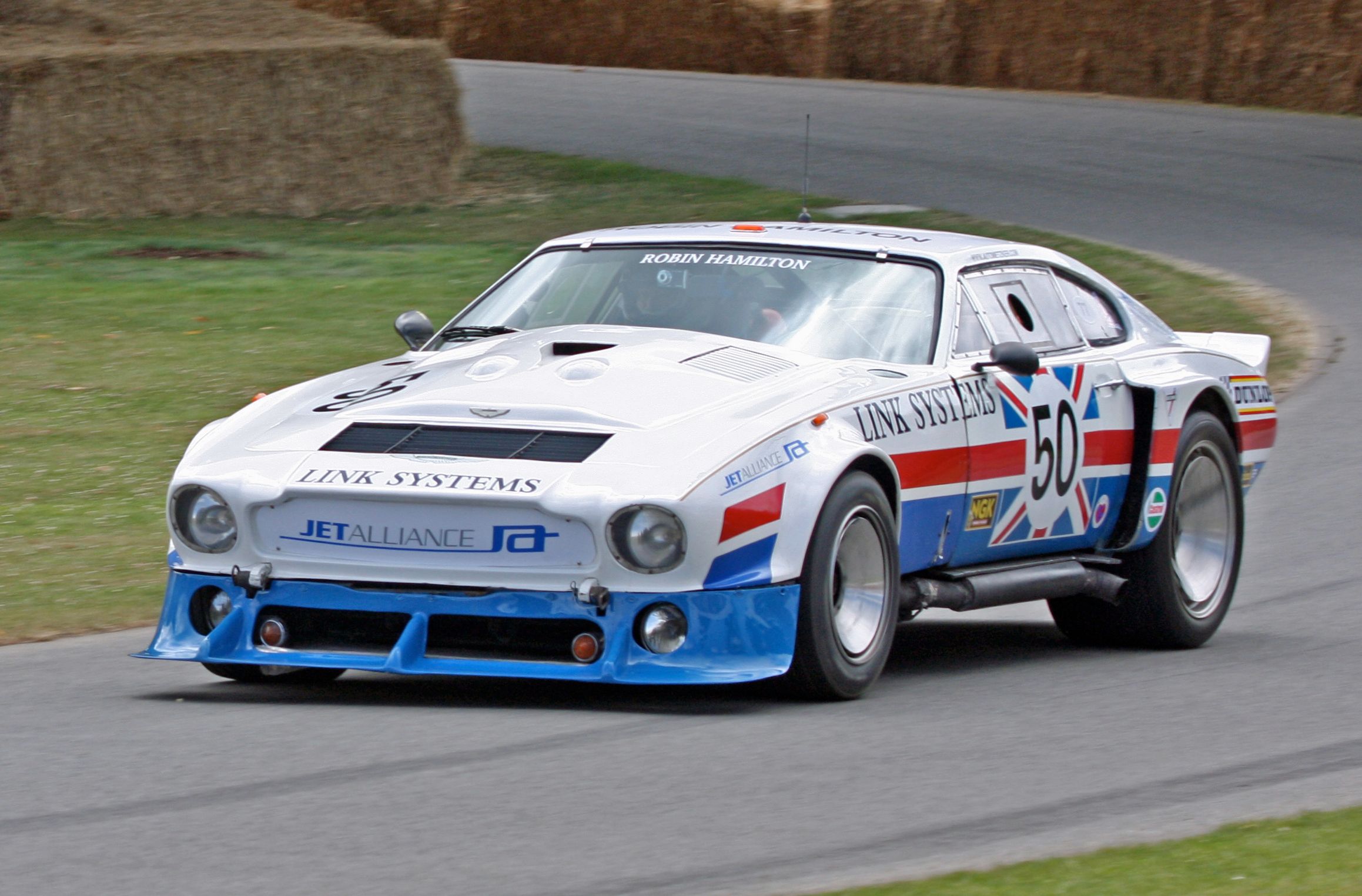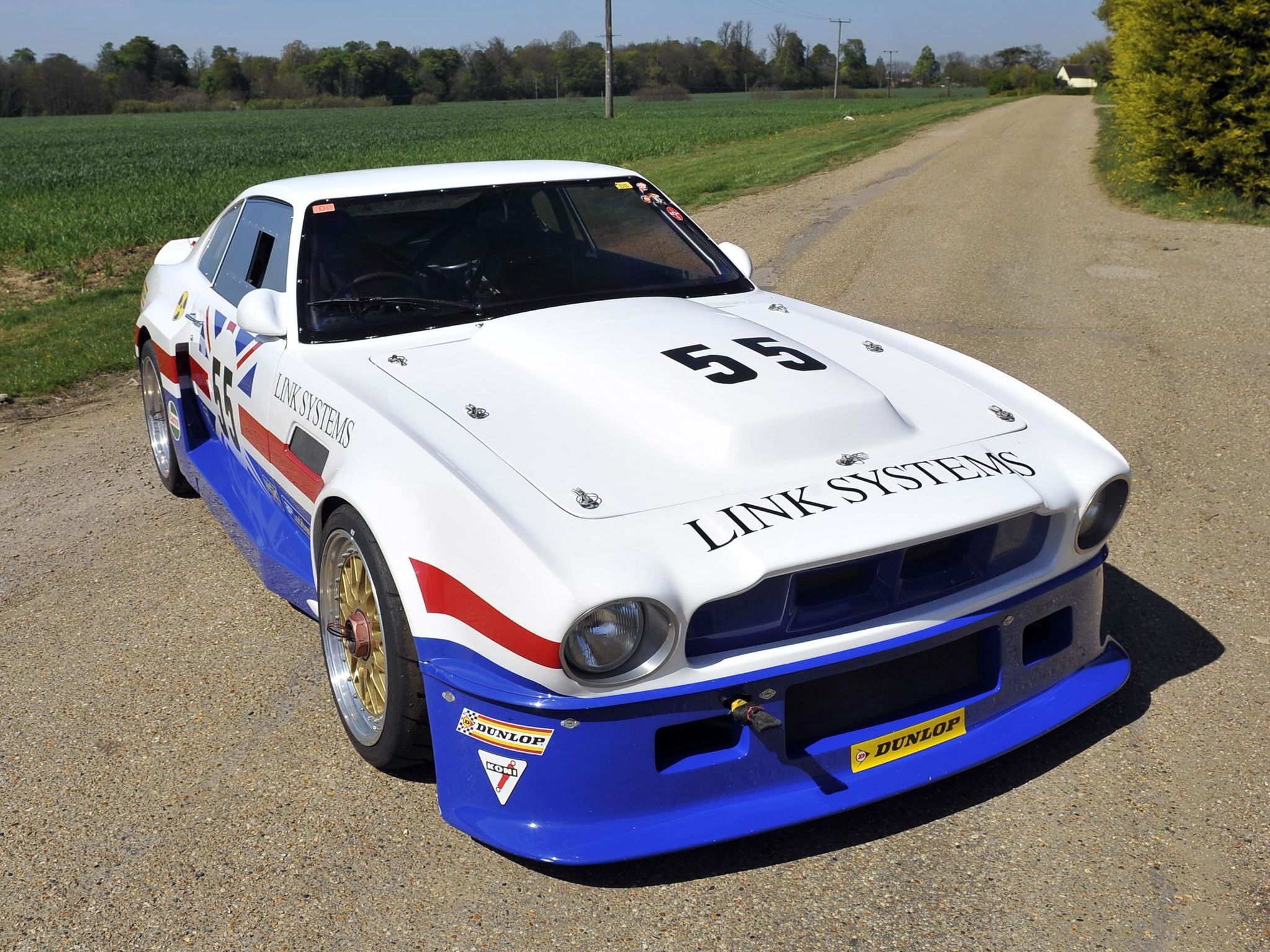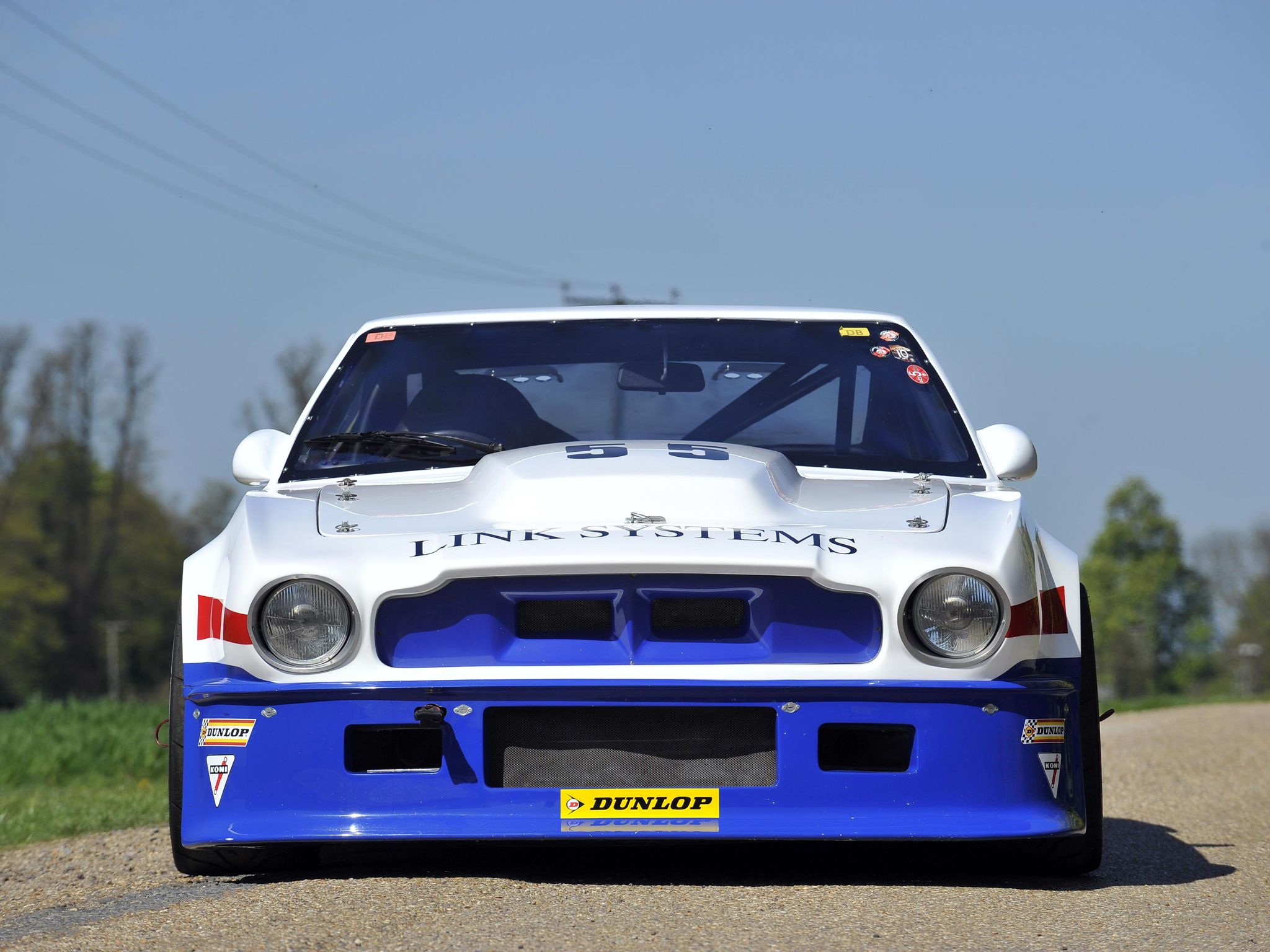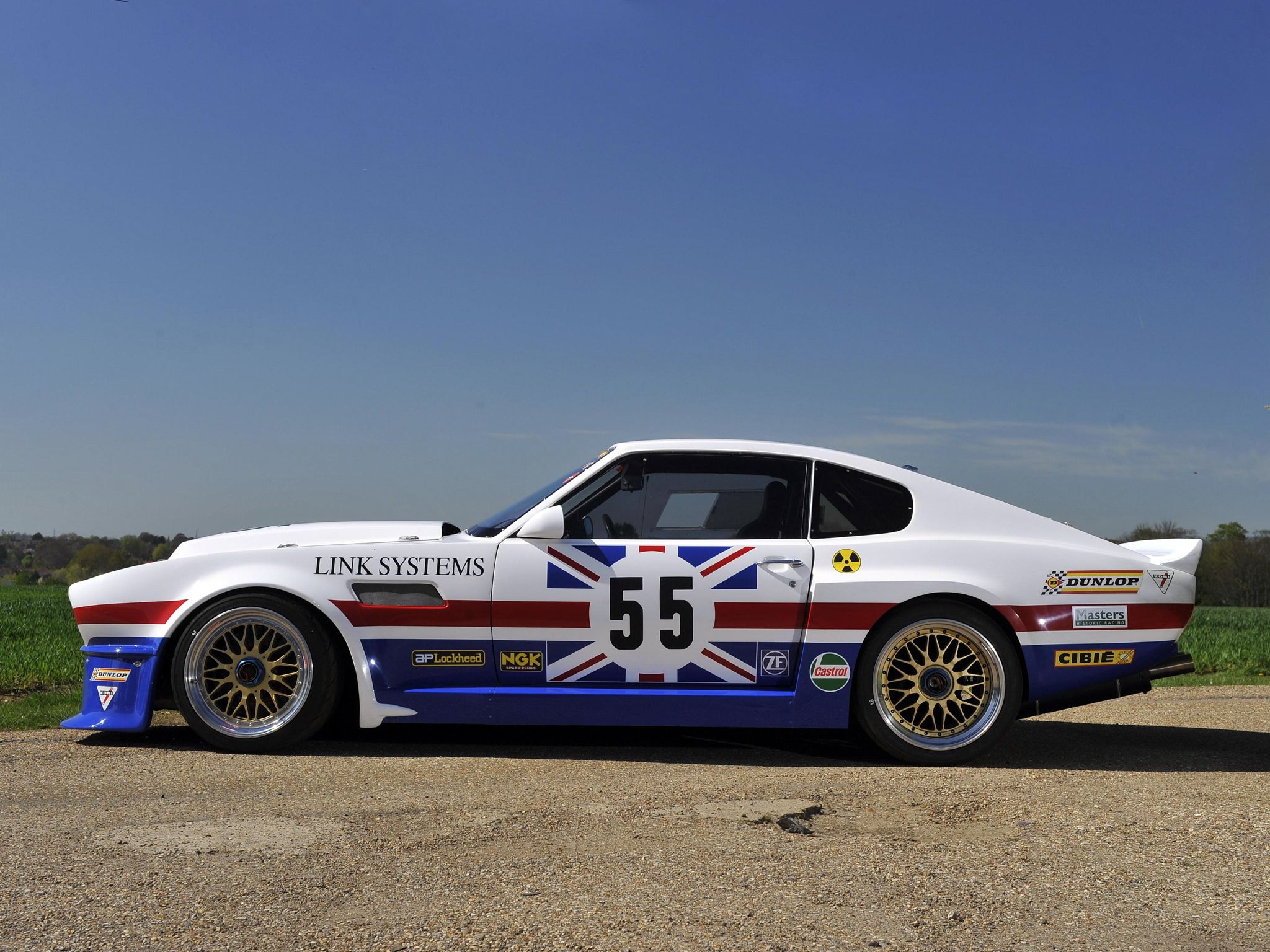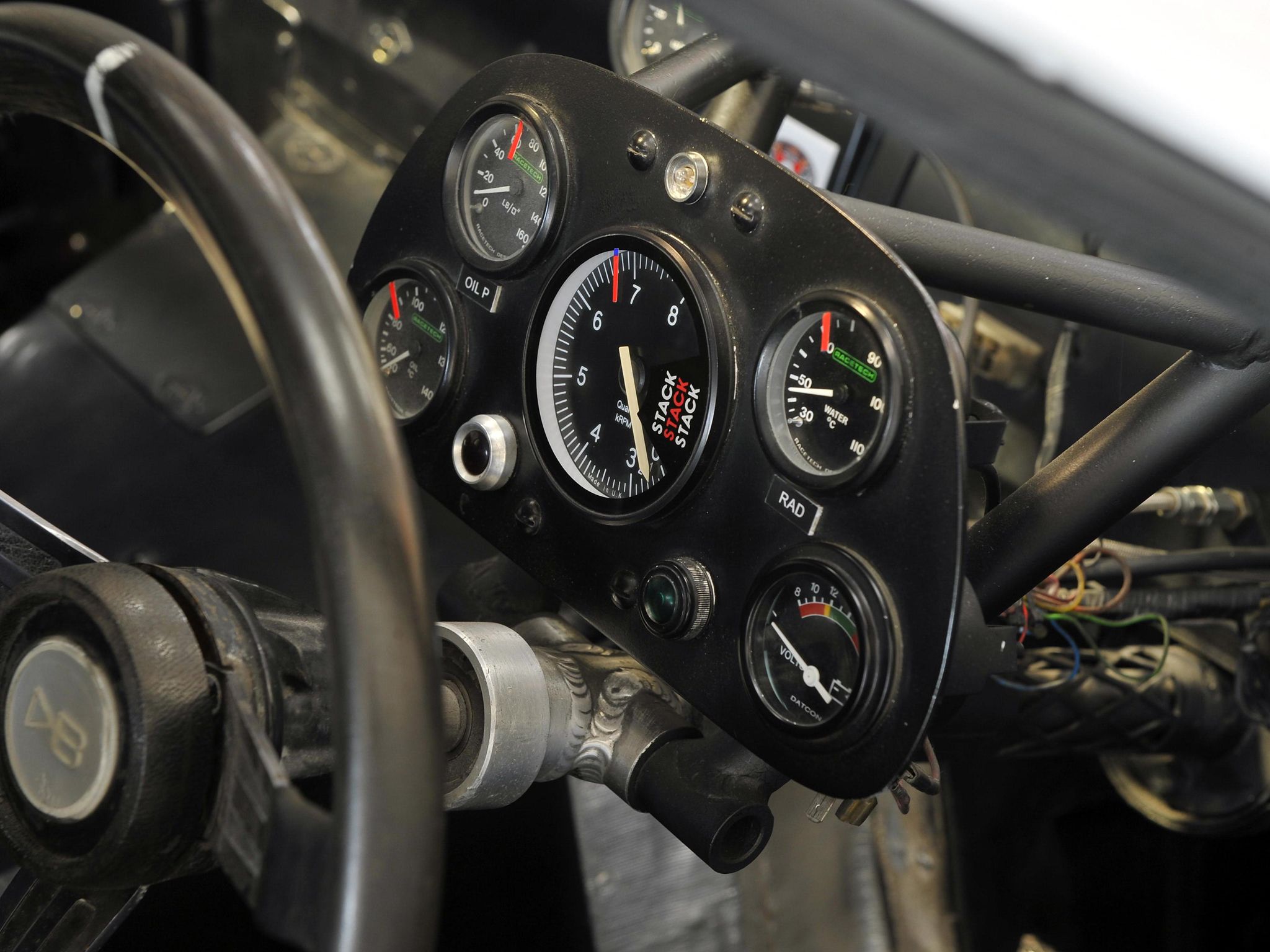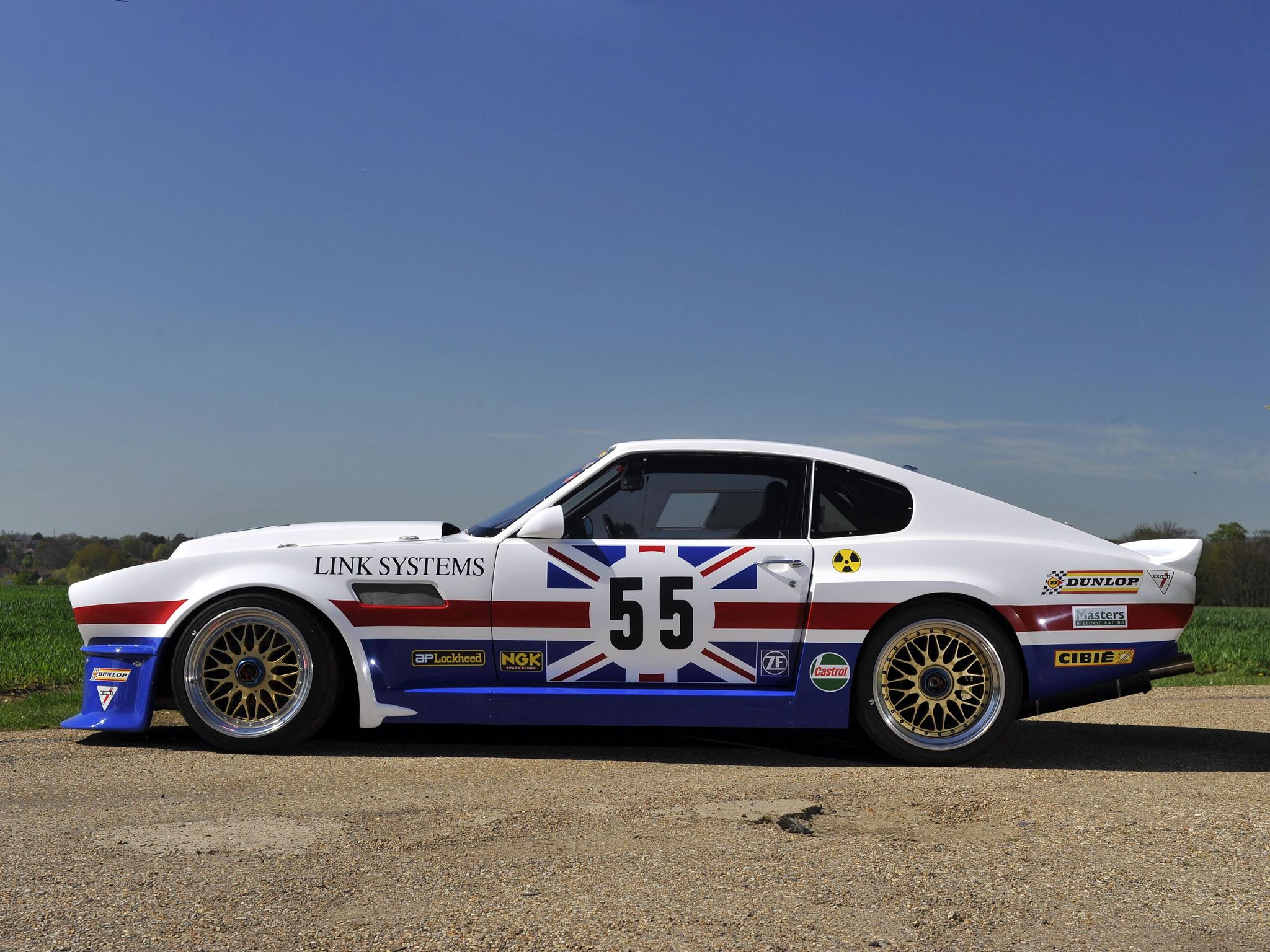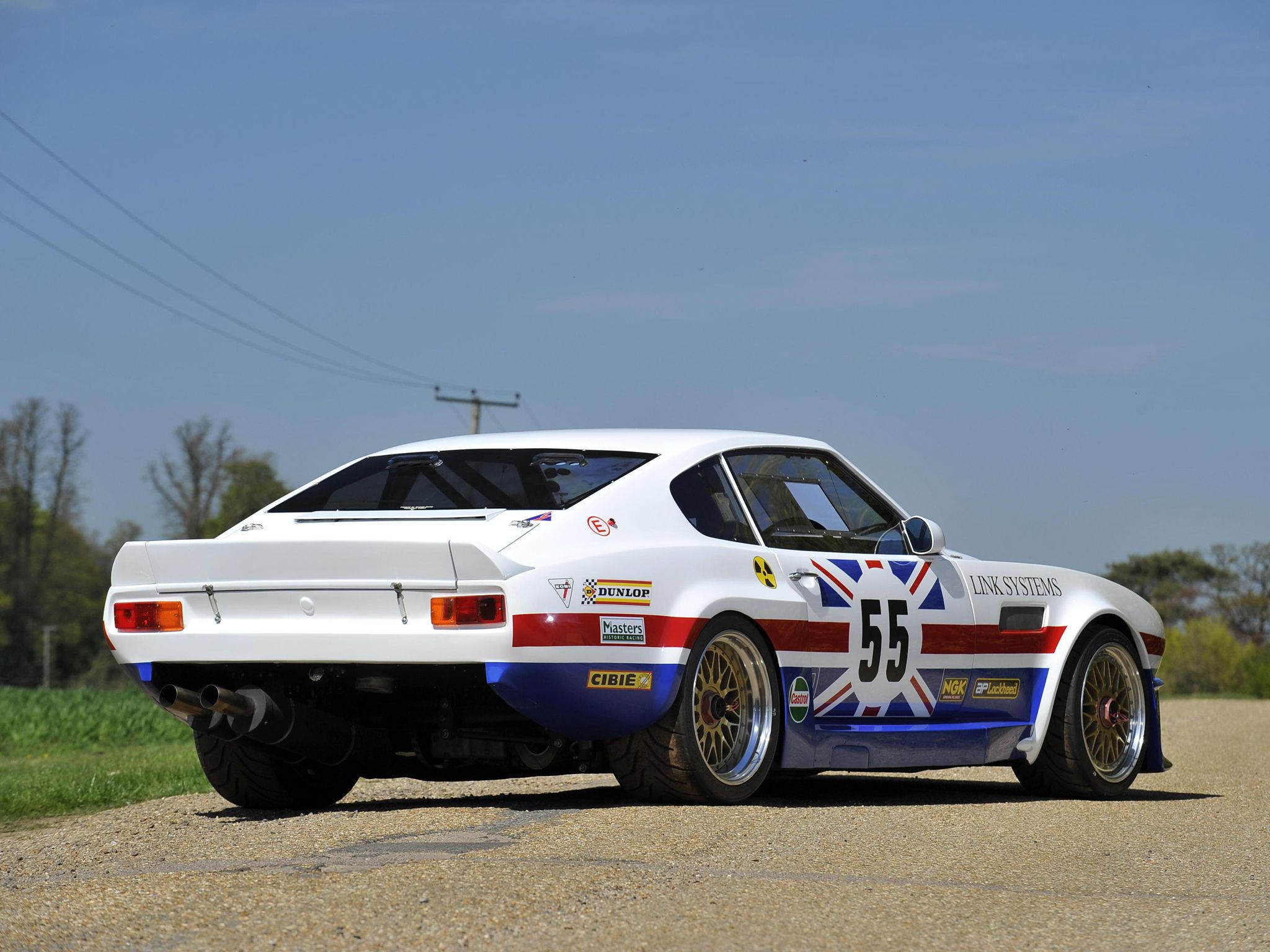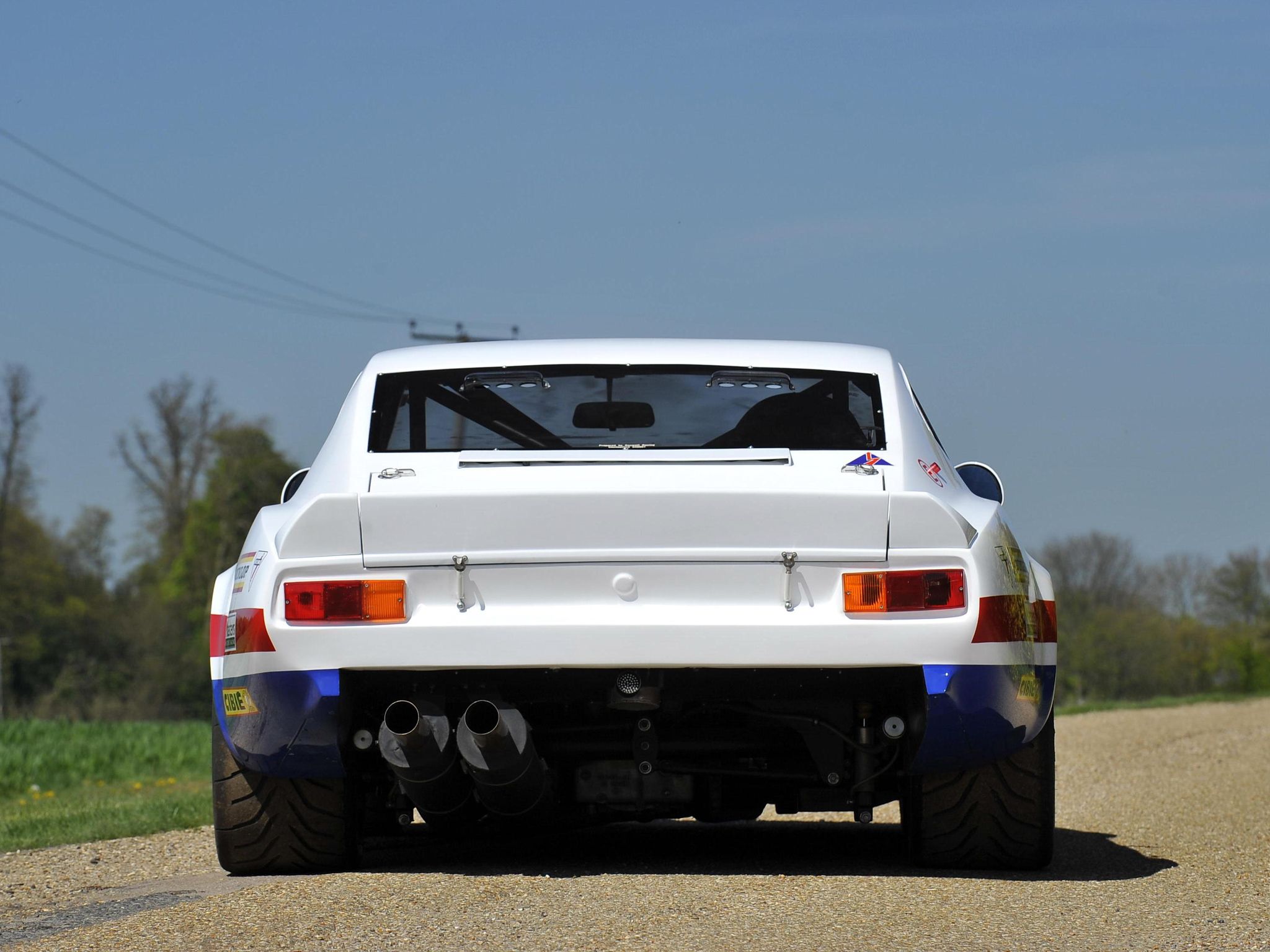The Porsche 935 is the poster child of the late '70s and early '80s in GT racing. Developed by Stuttgart's wizards and then modified by countless others the world over, Porsche's Group 5 weapon crushed its opposition with such force that you needed one if you wanted to win on either side of the Atlantic. Robin Hamilton tried to buck the trend by bringing to the table a car of his own from the brand he grew to love, Aston Martin.
Named 'The Muncher', this 1970 DBS V8 became a twin-turbocharged pseudo-grand-tourer able to go almost 200 mph down Mulsanne and battle prototypes along the way. A success story? Maybe not in the broader sense but it was the foundation stone to Aston Martin's much-awaited return to sports car endurance racing.
From Rolls-Royce engineer to Aston Martin specialist
Aston Martin's factory-backed racing program is one of the longest standing in modern endurance racing but the British brand hasn't always been a ubiquitous presence in long-distance racing, be it with GT cars or prototypes.
The elegant, Ted Cutting-designed open-top machine kept being relevant for a couple more seasons beyond its only Le Mans victory but, thereafter, Aston Martins began thinning out of the scene despite the company's attempts to stay relevant, first with the DB4 GT and later with a series of GT-shaped prototypes, namely the DP212, DP214, and the DP215.
The engines from Newport Pagnell, however, would make an unexpected return to Le Mans in the middle of two John Surtees-entered Lola T70s. Surtees, the famed two and four-wheel World Champion had won the Can-Am series the previous year in an open-top version of Eric Broadley's most beautiful creation and now wanted to conquer Le Mans in an all-British car. Thus, a partnership with Aston Martin was formed and a 5.0-liter version of the Tadek Marek-designed DP218 V-8 was sent to Team Surtees.
Sadly, the engine was overweight and finicky with both T70 Mk. 3s out of the running due to their powerplants. Thereafter, Aston Martin really went MIA for a few years. Meanwhile, the game moved on, first to the Porsche 917s and the Ferrari 512S's and then to the Group 6 prototypes from Mirage, Matra, or Alfa Romeo.
The oil crisis of '73-'74 saw some of those big boys in the prototype ranks call it quits and thus the sport's governing body had to take action to avoid the collapse of the World Endurance Championship. Around that time, a former Rolls-Royce engineer was just beginning his adventure as a fixer and seller of sports cars, most of which were Astons. His name is Robin Hamilton and his first racing exploits in a product of the British marque weren't particularly notable and the DB4 was soon swapped for a 1970 DBS V8, chassis number ‘10038’.
Powered by a 5.3-liter, fuel-injected V-8 capable of 315 horsepower, the DBS V8 was heavier than the six-cylinder DBS but also quicker going from naught to 60 mph in 7.1 seconds en route to a top speed of 150 mph. As Roger Moore's car of choice in the now-classic action-comedy series 'The Persuaders!', the DBS V8 would sometimes tussle with Tony Curtis' Ferrari Dino. While certainly not fooled by the magic of film, Robin Hamilton certainly saw through the admittedly thick skin of the V8 behemoth and believed that it could be made adequate for racing.
Going racing in something that should never see the track
"Even though it was unsuited to being thrown around it had an engine we knew intimately, so we set about developing that andthe rest of the car,” recounted Hamilton. His first outing with the car was at a sprint track meeting in Curborough and many others followed throughout 1974 and 1975. The first order of business was to fit the new AM V8 four-eyed face to the early DBS and then many mechanical upgrades followed. Modified cylinder heads, revised camshafts, side-draft Weber carburetors, a race exhaust system, bigger brakes, and stiffer springs all came over time as Hamilton developed the car by racing it. With the man-hours piling in and the car looking less and less like it did back when it'd left the factory in Newport Pagnell, Hamilton started thinking about a Le Mans entry.
His hopes were bolstered by the ACO's decision to introduce the GT Prototype (GTP) class alongside FIA's new invention, the Group 5 class for extensively modified GTs. Both were seen as a way to save the World Endurance Championship after the disappearance of both the works Mirage and the works Matra teams, as well as Alfa Romeo and Ferrari. Porsche and BMW would do battle in Group 5 and it was the French Inaltera concocted by Frenchman Jean Rondeau alongside the WM P76 belonging to noted Peugeot employees Gerard Welter and Michel Meunier. Hamilton should've sat at the same table as them but his DBS V8 couldn't make the trip to France.
The lack of money saw the car race a few more times on the British scene where a quartet of dragster-style downdraft Webers was probed. " went through a number of physical reiterations, some of which were ghastly,but we were learning," admitted Hamilton. "I remember phase where it had huge downdraught carbs jutting through the bonnet and spectators loved it."
Towards the tail end of 1976, a dynamometer session at the Newport Pagnell factory was followed by wind tunnel tests at MIRA. Despite that little bit of help, Aston Martin was in financial strife and couldn't help Hamilton who paid for almost everything out of his own pocket. " took a lot of interest in our aerodynamic studies at MIRA. I remember saying they should do a special high-performance ‘Le Mans replica’, but it fell on deaf ears. Then the Vantage appeared, which was the double of our car!"
Then, in 1977, the car was finally ready for World Championship-level racing and it was entered in its maiden race, the Six Hours of Silverstone, bearing chassis number #RHAM/01 (Robin Hamilton Aston Martin). An off in practice by Hamilton's team-mate David Preece was followed by a retirement in the race due to an overheating differential. Without the issues, the car would've probably come home inside the top 10. Seeing as there was pace in the thing, Hamilton entered it in the 24 Hours of Le Mans for the first time.
"We arrived a few days early and completed building it in the paddock. TheFrench thought we were crazy but they loved the Britishness of it all. The organizers,the ACO, may have turned a blind eye to a few indiscretions as the name Aston Martin still struck a chord with fans," and indeed the car quickly gained a new nickname as the French crowd would call it 'Le Petit Camion' (The Little Truck) due to its bulky proportions. I saw 'new' as Hamilton and his mechanics were already referring to the car as 'The Muncher' as it had already developed a propensity for eating through brake pads.
Despite some trials and tribulations during practice and qualifying, the car made it onto the grid, and then, come race day, it just kept going and going - sometimes too well, as it ran out of brakes on a number of occasions. With the engine keeping itself together and the drivers - Hamilton himself partnered by Preece, and Aston Martin veteran Mike Salmon - finding a way to not bin it despite the obvious lack of stopping power, The Muncher finished 17th which was enough to take third in the GTP class. Originally a Group 5 entry, the car had been moved to the GTP category prior to the race following a request made by the team with the reckoning that the GTP was more approachable in terms of getting a result.
The result came as a shock to some who'd written off the overweight Aston as completely unfit for racing. "Of the other British entrants, the Robin Hamilton team was the only one to come away from the Sarthe with a real sense of achievement, for the Aston Martin droned on and on, and never once looked like failing to finish," wrote Autosport Magazine, one of those that had doubted the Aston team's chances of a finish. An "upset" is how Motor Sport spoke of Hamilton's third-place result while applauding the car's resilience. "We were third in the GTP class but had we run in Group 5 we would have been second," said Hamilton who added that "as Aston specialists, we couldn’t very well race a Porsche."
As such, more modifications were in order to keep 'The Muncher' competitive. With 520 horsepower already available in N/A form (enough for a top speed of 188 mph down Mulsanne), the only way the team could find more oomph was by way of turbocharging. "We set about it ourselves, and at times we were getting 800 horsepower or more, but the heat build-up was immense. We couldn’t afford a proper intercooler system so I knew we were on thin ice."
The new setup was ready in time for the 1979 edition of the Six Hours of Silverstone as the team elected to not race at all in 1978. The extra time allowed Hamilton to basically rethink the car's aero kit. A new, more protruding air dam was mounted in the front and the roofline was lowered to improve drag figures. The ducktail in the rear became larger as well but the major downside was that the V-8 with its twin Garret turbos was now sucking fuel like never before with full-boost consumption reaching a ridiculous 2 mpg.
But the brake issues weren't cured and it was the constant wear of the discs and pads that hampered #RHAM/01 around Silverstone. The day ended for Hamilton with a mid-field result and from there it was once again on to the 24 Hours of Le Mans where Porsche specialist Derek Bell was slated to join the team.
"We were thrilled to have him on board and Derek put in some good lap times. He said it was the only car that could reel in the Porsche 935s on the straight. We were getting more experienced and I still think that when we chopped down the roofline we made quite a mean-looking car. It was done for aerodynamic reasons although we found we then had too much downforce at the front. It was hard work to drive and not as fast as it could have been." While quicker than ever, the DBS V8 in 1979 trim couldn't last as long as its former self and was a retirement during the third hour due to a melted piston.
'The Muncher' last raced in anger at Silverstone in 1980 where it retired early but sharing the scene with it was another markedly weird creation entered by Hamilton. Known as the Gipfast DPLM, it was a closed-cockpit, wingless prototype that previewed Robin's ambitions to enter cars of his own design in the future. These dreams would materialize as early as 1982 with the birth of the Nimrod NRA/C2, the first Aston Martin-powered Group C prototype whose story we've delved into here.
While going prototype racing soon emptied Hamilton's pockets and he parted ways with the DBS V8, the car's next care-takers all were careful to preserve it as much as possible. It left Hamilton's ownership in full 1980 spec complete with a towering rear wing which is how it still looked back in 2006 when Bonhams tried to sell it with pundits saying at the time it could grab as much as $170,000. Later on, it ended up being returned to 1979 specification and traded hands once more.
The 1979 version of 'The Muncher' is undoubtedly the key inspiration for the latest one-off Aston Martin built by the company's Q Division (they do try to piggyback on that James Bond fame at every step, don't they?). Akin to Hamilton's DBS V8, the Victor as it's called is hiding under its hunching bodywork the underpinnings of a Vulcan. To say it is insane would be an understatement but the same could be said by the RHAM/1 which, in other words, means the Victor does its job of emulating its grandfather.
P.S. One thing the Victor will probably not do that 'The Muncher' did is this.


